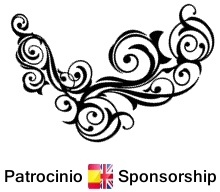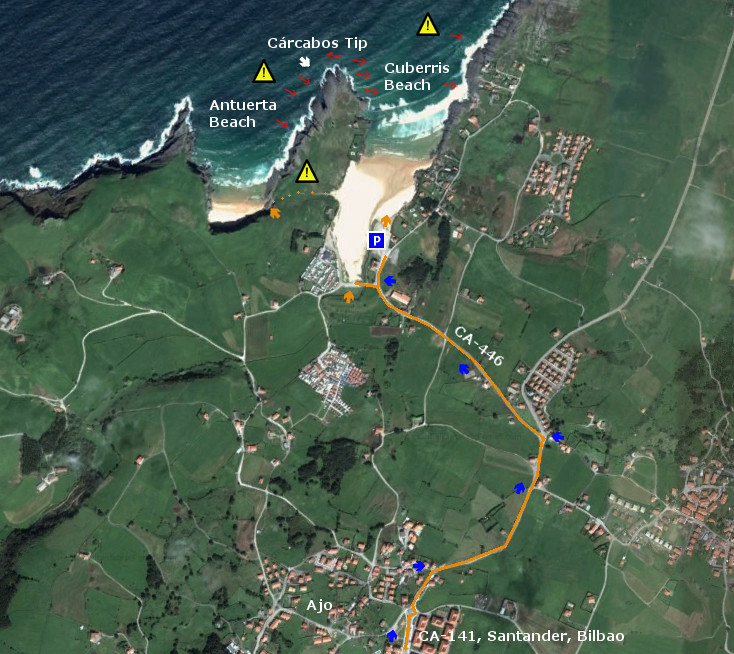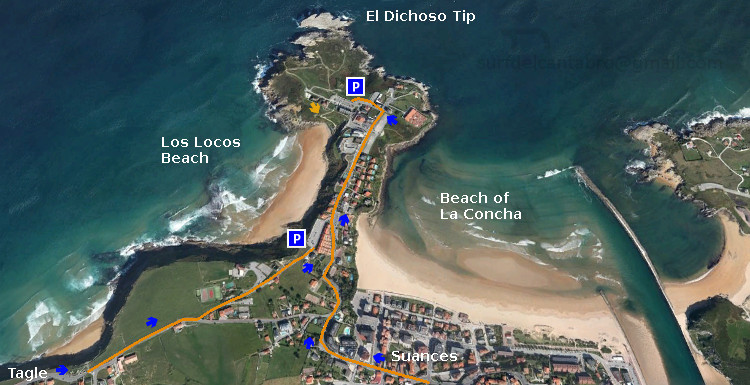 La arena suelta descansaba sobre el fondo local, compuesto de rocas y arena firme. Estas características se reflejan directamente en la ola. Su trayecto es regular a lo largo de todo el recorrido. La superficie lisa facilita el deslizamiento, trasladando más velocidad a la tabla. Todas estas características proporcionan buenas olas y poder realizar maniobras.
La arena suelta descansaba sobre el fondo local, compuesto de rocas y arena firme. Estas características se reflejan directamente en la ola. Su trayecto es regular a lo largo de todo el recorrido. La superficie lisa facilita el deslizamiento, trasladando más velocidad a la tabla. Todas estas características proporcionan buenas olas y poder realizar maniobras.
Después de un rato hablando de la zona y sus olas, apareció a lo lejos una nueva serie. Su tamaño y la distancia hacían intuir buenos momentos de surf. La gente que aún quedábamos en el agua, nos fuimos dispersando a lo ancho. Con espacio suficiente entre nosotros, la elección de la ola y el trazado, iban a ser de mejor calidad. Un excitante nerviosismo llenaba el ambiente. La calma nos sobrevino un instante después. La idea de una gran ola anidaba en el pensamiento.
El hombre mayor se posicionó a la izquierda. Con la llegada de la primer ola se dirigió a su encuentro. Todo el mundo empezó a moverse hacia mar adentro. Remé con fuerza para alcanzar la mejor posición. Iba viendo como se acercaba aquella ola, su trazado semicurvo ocultaba parte de su extremo. Comenzó a romper por esa zona. Una silueta asomó en el recorrido de la ola. Cuando llegó hasta mí, me elevó. Giré para contemplar lo que sucedía. Con el agua lisa y esculpida, el surfer se fue desplazando; mirando hacia la ola. Así como la ola se fue alejando, él continuó su viaje.
La serie continuó. Colocado en posición, esperé la siguiente ola. Con dos metros de altura, mantenía su volumen sin romper. Cuando llegó hasta mi, golpeó la tabla y apenas tuve que remar. La sacudida me subió a ella. Abriendo hacia izquierdas, permanecí en la cresta durante unos metros. El extremo izquierdo venía cerrando. Cabalgué en lo alto. Antes de encontrarme con la rotura, giré con el cuerpo para volver sobre el trazado y no chocar con el cierre. Un nuevo camino se abrió. Bajé la ola y me dirigí hacia la derecha.Una sensación de vértigo y alegría me emborracharon. Balanceando los brazos conseguí regresar a la cima. Al contacto con esta flexioné el cuerpo y volví a girar. Un tramo recto y sencillo llegó a continuación. La adrenalina y la pasión fueron posando. Extendí los brazos y grité, consciente de la buena ola que había disfrutado. Con el viaje ya cercano a su final, las rocas se iban acercando. Me apeé de la ola zambulléndome en el agua. Buceando y soñando.
 The loose sand had been rested on the local fund, composed of rocks and firm sand. These characteristics were reflected directly in the wave. Its design was regulate along the route. The smooth surface facilitated the slip, giving speed to the table. All these features provide good waves and the posibility to perform maneuvers.
The loose sand had been rested on the local fund, composed of rocks and firm sand. These characteristics were reflected directly in the wave. Its design was regulate along the route. The smooth surface facilitated the slip, giving speed to the table. All these features provide good waves and the posibility to perform maneuvers.
After talking about the area and its waves for a moment, appeared in the distance a new series. Its size and the distance could announce good moments of surfing. People who still was in the water had got disperse points along the sea. With sufficient space between us, the choice of the wave and the path would have better quality. A exciting nervousness filled the atmosphere. Then a time of calm. The idea of a great wave was living in the thought.
The older man was positioned to the left. With the arrival of the first wave went to his meeting. Everybody began to move toward sea. I rowed with force to achieve the best point. I was watching as the wave was approaching , its layout drew a curve that had concealed part of its end. It began to break in that place. A silhouette appeared in the path of the wave. When it came up to me, I raised with the water . I turned to contemplate what was happening. With the smooth and sculpted water, the surfer was moving; facing the wave. As well as the wave was moving away, he continued his journey.
The series continued. I placed in position, waiting for the next wave. With two meters of height, it maintained its volume without breaking. When the wave came up to me, it hit the board and I barely had to row. The jolt transported me to the wave. The opening was toward left, I stayed at the crest for a few meters. The left end was closing. I continued riding the top. Before I met the breakage, I turned with the body to come back on the initial path and to avoid the closure. A new road was opened. I slid down the wave through to the right side. A sense of dizziness and joy accompanied me. Moving my arms I got back to the pinnacle. In contact with it, I bent the body and returned to rotate. A straight stretch and simple reached below. The adrenaline and the passion were posing. I stretched out my arms and shouted, aware of the good wave that I had enjoyed. With the trip close to its end, the rocks were approaching. I got off the wave, through the deep of the water. Diving, dreaming.

![]() La Playa de Oyambre está situada en el municipio de Valdaliga. Esta playa se encuentra dentro del Parque Natural de las Dunas de Oyambre, que se extiende a través de varios municipios, en la costa occidental de Cantabria. El viaje se realiza por autovía y finaliza a través de las carreteras nacionales: N-634 por el oeste y CA-131 por el este.
La Playa de Oyambre está situada en el municipio de Valdaliga. Esta playa se encuentra dentro del Parque Natural de las Dunas de Oyambre, que se extiende a través de varios municipios, en la costa occidental de Cantabria. El viaje se realiza por autovía y finaliza a través de las carreteras nacionales: N-634 por el oeste y CA-131 por el este.![]() Oyambre’s Beach is placed in the municipality of Valdaliga. This beach is in the Nature Reserve of Oyambre’s Dunes, that it spreads across several municipalities, on the western coast of Cantabria. The travel runs by highway and finishes through the national roads: N-634 from the west and CA-131 from the east.
Oyambre’s Beach is placed in the municipality of Valdaliga. This beach is in the Nature Reserve of Oyambre’s Dunes, that it spreads across several municipalities, on the western coast of Cantabria. The travel runs by highway and finishes through the national roads: N-634 from the west and CA-131 from the east. Localización/Localization
Localización/Localization![]()














